Core Training – 9 Mistakes To Avoid To Get Strong Abs (And More)
Core muscles and abs in particular have a more important role for athletes than just be showcased on social media. Besides looking nice they also brings stability to the whole body, making movements more efficient and powerful. Which is why core training should be any athlete’s top priority.
It does come as a package deal, though. ‘Six-pack’ is usually a sign of good core strength.
The reason why core doesn’t get the attention it requires is because most people believe strong abs equal strong core muscles. Maybe including obliques also.
So, what does core really consist of?
What are core muscles?
Core is a group of muscles located in the center of the body (hence the name). It’s the most influential muscle group, because it acts as a central hub keeping all adjacent muscles aligned and healthy.
Since its function is to stabilize the whole body, all muscles that attach to the spine contribute to a strong core. Abs, lower back, obliques, hips, glutes, adductors and even lats.
Core, essentially, connects upper and lower body and provides stability and control over all body movements.
That stability – among other things – improves performance, promotes good posture and reduces the risk of many injuries.
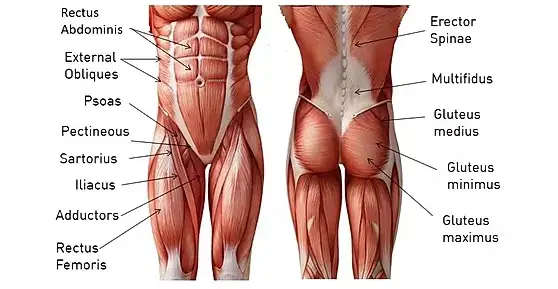
Strong core distributes the load most effectively across the body – to those muscle groups that are designed best for the purpose. It also ensures no muscle or joint is tight or unable to operate.
For example, tight hips limit the range of movement and force the load during running from hamstrings to quadriceps. This results in a shortened and inefficient run form, as well as carries the risk of an overuse injury.
Strengthening the core in this case will help develop hip stabilizing muscles, which will keep hamstrings engaged properly.
Why is it bad to skip core training
All muscles in the body are inter-linked. When one muscle gets fatigued or is tight and inactive, the load is forced on adjacent or supporting muscles, causing overuse, muscle imbalance, discomfort or even pain.
In fact, muscle imbalance is one of the key indicators of an upcoming injury. When either of the athlete’s sides (left vs. right or anterior vs. posterior chain) is significantly stronger, there’s a high chance it will develop pain.
Torn hamstring during a sprint, shoulder pain after lots of swimming, sharp low back pain during walking. All of these are results of muscle imbalance.
Read also: Strengthen Posterior Chain To Improve Performance & Prevent Injuries
Strengthening core muscles creates the foundation for any athlete – be it a marathoner or a weightlifter. It corrects any muscle imbalance, brings stability to the body, develops efficient movement patterns and allows the athlete to produce maximum power. That ultimately translates to speed, power and efficiency – both qualities of top level athletes.
Athletes can minimize the injury risk and maximize performance by including core training in their schedule. Its relatively low intensity helps to engage stabilizing muscles and develop base strength in those. So, make it a habit to do as little as 5-10 minutes of intense core circuit after every easy session.
Core training mistakes and how to avoid them
Training core and muscle stability is unlike any other form of training. It differs from improving strength or building endurance and, therefore, has a few tricks to it. No wonder why many athletes make mistakes or skip it altogether.
Below are, in my view, the most common mistakes athletes make during their core training.
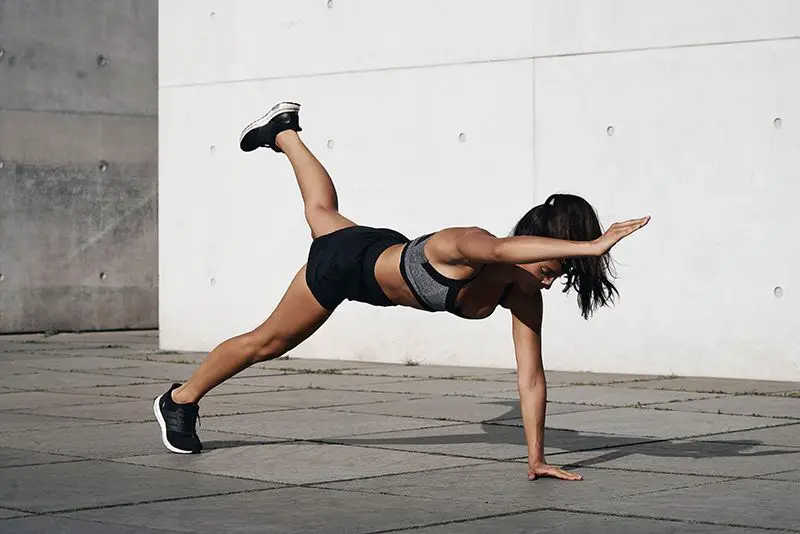
Mistake #1 – Exercising with poor form
While form is an important part of any exercise, in core training it’s the most important part. Having incorrect body positioning during the exercise will not engage the right muscles and will not bring desired results.
When the form is poor bigger muscle groups (legs, back, etc.) start to compensate and the whole exercise becomes useless. Poor form usually means that either the exercise is too tough or the body is too tired.
How to fix: before doing any core exercise learn what does it target and what’s the correct form. Then – during the exercise – think of that and try to stabilize the whole body accordingly.
Also, when performing any core exercise try to think of the following elements:
- Avoid arching the back. When lying on the back, lower back should be in contact with the floor.
- Draw the belly in. If belly is drawn out, abs are more relaxed and not fully engaged.
- Engage (squeeze) the glutes to keep the butt ‘under’ the torso and maintain a straight line.
- Keep shoulders down and back. Keeping shoulder blades together creates correct posture, engages abs fully and reduces pressure on shoulders.

The Resilient Athlete
A Self-Coaching Guide to Next Level Performance in Sports & Life
Are you aiming to become a resilient athlete who is able to withstand any pressure? Be able to jump on any opportunity? Take any challenge life throws at you head on?
Then this book is for you.
Learn moreMistake #2 – Jumping to advanced exercises too soon
Trying to do advanced exercises before learning the basics is not effective. What it does is only put more load on core muscles that are not yet strong enough. As a result, the exercise is done with poor form – shaking, rocking, wiggling – and without any control. This forces large muscle groups to compensate and the exercise becomes much less effective.
Doing hanging windshield wipers looks cool, but before that athletes need to be able to just raise their legs with perfect form while laying on the ground.
How to fix: instead of doing complex movements right away, focus on building basic strength across the whole body first. Take your time to go from beginner exercises (bridges, planks) to intermediate (bird dog, mountain climbers) and then to advanced (side planks, hanging leg raises).
If you want to test yourself – do it once, but don’t force it if you can’t. You’ll do it with ease once you get stronger.
Mistake #3 – Expecting (quick) muscle growth
Doing core training and expecting to grow a lot of muscle is not the right mindset for athletes.
This muscle group is designed to stabilize adjacent muscles and promote correct movement patterns. Which is why these muscles are small in size, there are lots of them and they cover a large area in the body.
Core is an ‘endurance’ muscle – it’s always involved whenever you are moving, standing or sitting. It consist mostly of slow-twitch fibers (smaller in size) and, therefore respond differently to exercise than prime movers (like legs, back, etc.). So, thinking about abs and core in terms of muscle size goes against its whole purpose.
How to fix: focus on the function instead – make it as resilient as you can. Once the core is strong enough to stabilize the body during complex exercises it will look shredded. And will better support other muscle growth.
When athletes make a connection that core is for stability – not strength – the training changes. And with that come better results.
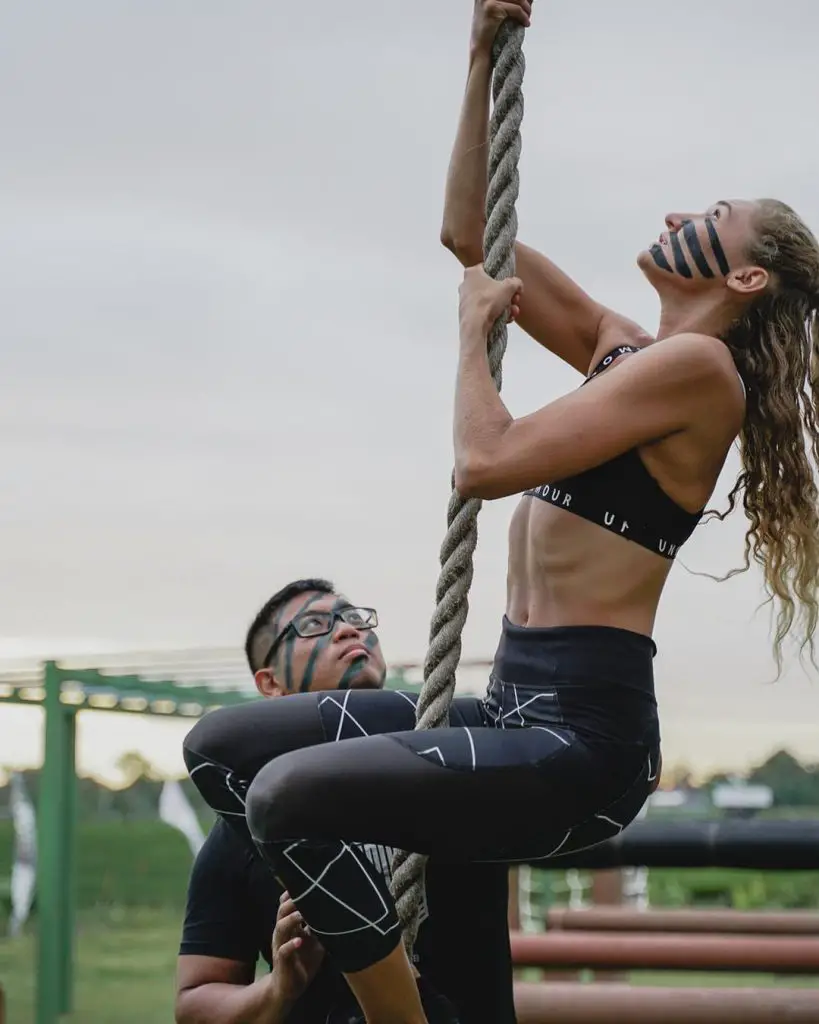
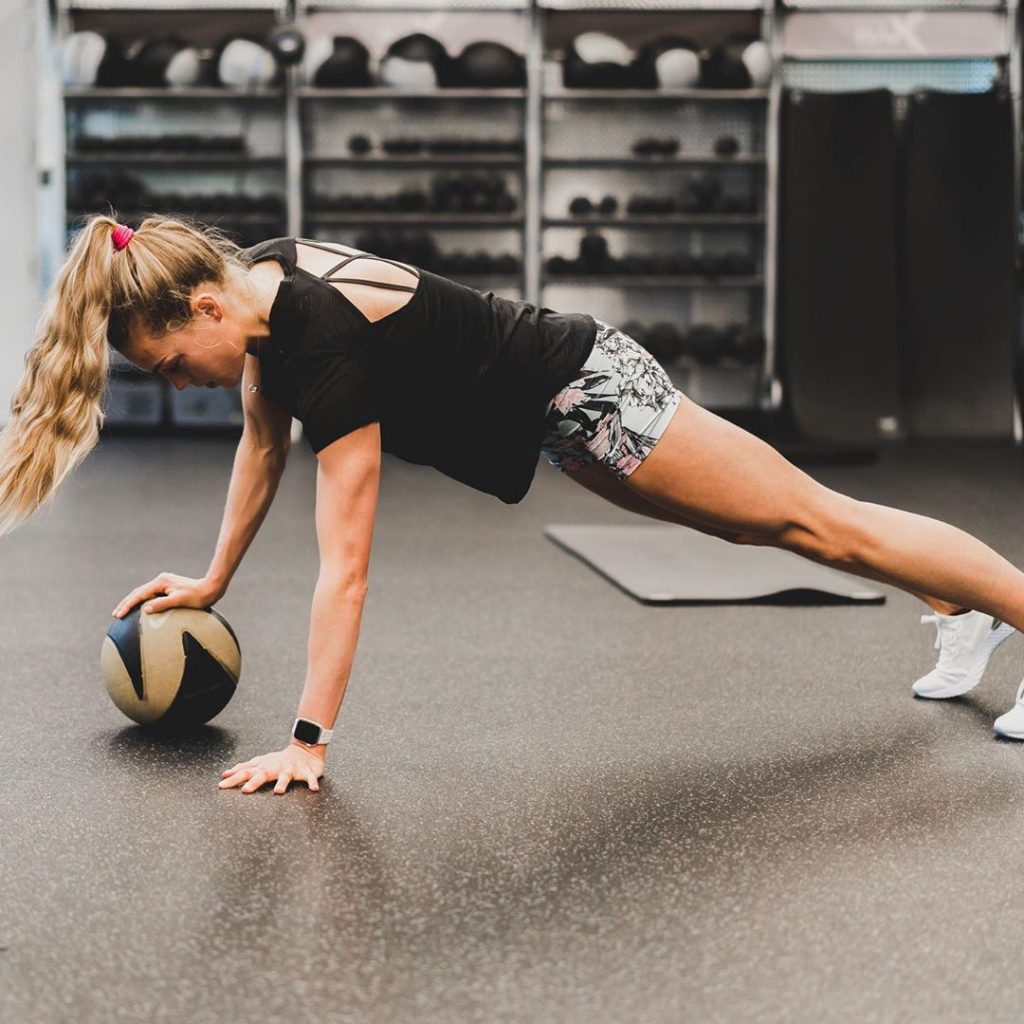
Mistake #4 – Not paying attention to nutrition
Often the purpose behind training abs or core muscles is to get a 6 pack. However – as shared earlier – core muscles are small in size, so regardless of how hard we train they won’t be visible if athlete carries too much extra weight.
For abs to get visible the main workout should be done in the kitchen – optimize the diet. You can’ have a 6 pack without losing the body fat from everywhere in the body – reduce the overall fat percentage and 6-pack will come.
Abs start to get visible somewhere under 15% body fat.
Also, high body fat makes many core exercises (even basic) much harder. For athletes who carry excess weight and want to do advanced exercises the primary goal should be to get more lean.
How to fix: make sure your diet is optimized for performance. Minimize the amount of refined sugar (soda, junk, fried and processed foods) you consume. This will help the body to normalize blood sugar, reduce cortisol and get rid of that excess weight.
Instead, focus on greens, veggies, seeds, nuts and legumes (spinach, kale, zucchini, paprika, beans, lentils etc.) to feed the body. It will provide all nutrients needed for recovery and normalize insulin sensitivity to reduce unhealthy food cravings.
Read also: How To Become A Better Athlete – 38 Practical & Useful Tips
Mistake #5 – Living a sedentary lifestyle
Core muscles are engaged the most by movement, because the body has to constantly stabilize itself. Be it from falling down while walking or to make a specific action (lift a leg or throw something). Naturally, the more active the person is the more endure and strong his core muscles are.
Sedentary people tend to also avoid activities that require bending too much. That is one of the key factors why for most of the people there is more fat around the belly. That’s where core muscles are mostly concentrated.
How to fix: move as much as possible throughout the day and avoid periods of inactivity. Take stairs instead of elevator, stand while you’re working at the desk or even clean the house instead of sitting and watching TV. All of it will make the body more resilient, which is the purpose of core training.
Moving more during the day also requires energy and helps to burn off some extra fat.
Mistake #6 – Focusing on strong abs alone or isolating certain muscles
Some athletes pay too much attention to a single muscle group in their training – usually focus on getting strong abs. However, for maximum performance we need core to support the entire body.
Abs are not the center of the universe. Hips, glutes, obliques, lower back – all of these muscles have an impact on athletes’ form as they run, swim, kayak or even cycle.
Isolating and training one muscle group will not give athletes as much stability as doing a full-body exercise.
A well-rounded core is able to support the body more effectively making it virtually ‘bulletproof’ – even when fatigue kicks in. It will help the athlete maintain good form and stay efficient for longer, which is very important towards the end of the race.
How to fix: athletes should vary core exercises they perform and include more compound movements in their training sessions. That will make the body more resilient and efficient.
For maximum performance it’s best to simulate environment where entire core is forced to work and stabilize. The best approach for that is to use explosive movements – jumps, burpees, mountain climbers, medicine ball throws, etc. These will engage core the most and trigger the best adaptation.
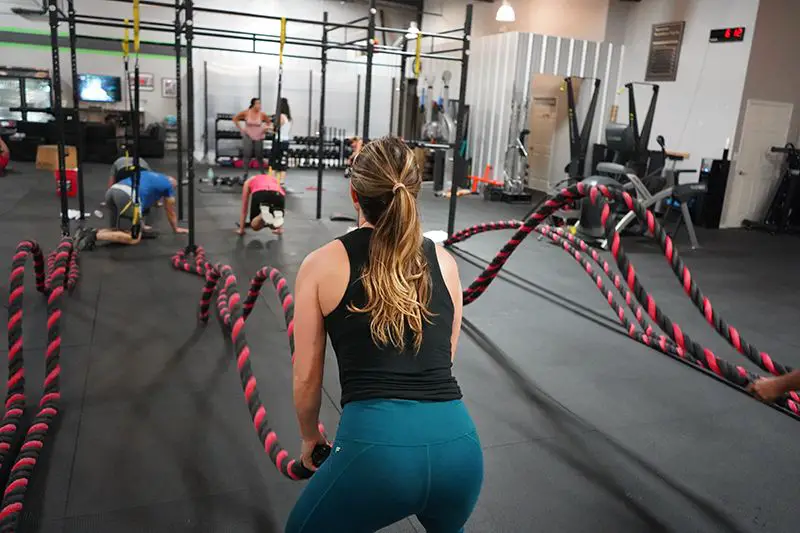
Mistake #7 – Repeating the same core training exercises
When athletes repeat the same couple of exercises, they risk to eventually plateau their core strength growth. While getting stronger is good, it’s best to vary core exercises to trigger better adaptation.
For example, plank is a good exercise for beginners, but once athletes are able to hold it for 1-2 minutes it will require a longer hold to provide a training effect, which many don’t do.
How to fix: as the body grows stronger add complexity to all core exercises or include those you’re unfamiliar with. Complete exercises on unstable surfaces or add extra movement to them – alternate between plank and side planks, do it on an unstable surface, include leg raises and so on.
Personally, I like to include a session of Pilates or Yoga at least once a week. These always challenge my body, regardless how strong I’m feeling.
Mistake #8 – Training core with large weights
One of the biggest core training mistake most people make is adding too much weight to their exercises – through the use of machines or free weight.
The purpose of core exercises is to build strength in supportive muscles and around the core area. These muscles are small in size and aren’t able to lift & carry big weights.
Overloading core & stabilizing muscles with big weights forces large muscles to compensate and makes the exercise useless.
Besides that, forcing heavy weights (i.e. using machines) on the core adds a lot of fatigue. As a result, athletes are only able to include such training 1-2 times per week.
How to fix: a more effective way to train the core is to use body weight exercises and complete a 10-15 minute long routine every day.
With large weights and machines athletes can only do a standard set of exercises. With body weight exercises, though, they can vary a lot and proceed to more advanced exercises which will provide naturally appropriate resistance.
Read also: 5 Core Exercises For Runners To Get Fast & Stay Injury-Free
Mistake #9 – Rushing through exercises
Often when the exercise is done slowly people feel discomfort and try to push past it by doing it faster. However, doing so is one of the biggest core training mistakes. That discomfort comes from weakness in the muscles and is the whole point of the exercise.
Rushing through the exercise to complete it as fast as possible reduces the training effect on core and stabilizing muscles. It’s better to make fewer repetitions but do them right – at slow speed. Working slowly helps to engage smaller muscles and correct muscle imbalance more effectively.
How to fix: Set a time goal and exercise slowly. Forget about repetitions – time under tension is what matters for core muscles. The more time athletes can spend under tension the more resilient they will get.
For example, when doing sit ups don’t come up all the way and don’t lie down after every repetition. Instead, take 20, 40 or 60 seconds and repeat the exercise while keeping the core engaged at all times.
Did you find this information useful? Share the post with others using the buttons below.
Tags In
Andrejs
Related Posts
1 Comment
Leave a Reply Cancel reply
GET A FREE TRAINING PLAN
Subscribe to my email list and get access to a free 4-week “back in shape” training plan
You’ll also get two full-body strength sessions and some other goodies!

How did I get here?
Hey there! My name is Andrejs and I am here to inspire, entertain and get you fit for any adventure.
I went from being an over trained pro athlete to an endurance coach sharing how to listen to your body and live life to the fullest.
Traveling, new sports & activities brought new meaning to my training and made it much more effective, fun and enjoyable. And I'm here to help you do the same.
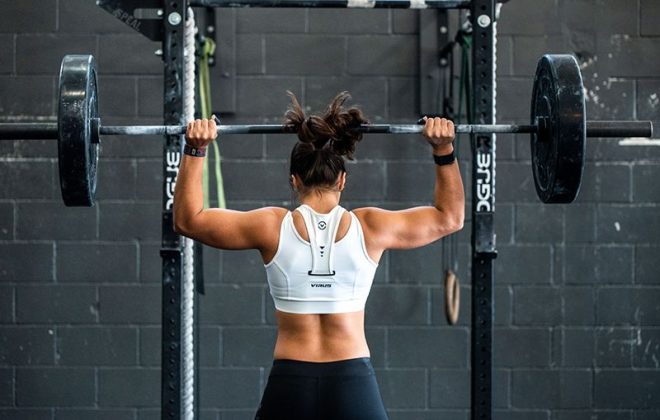

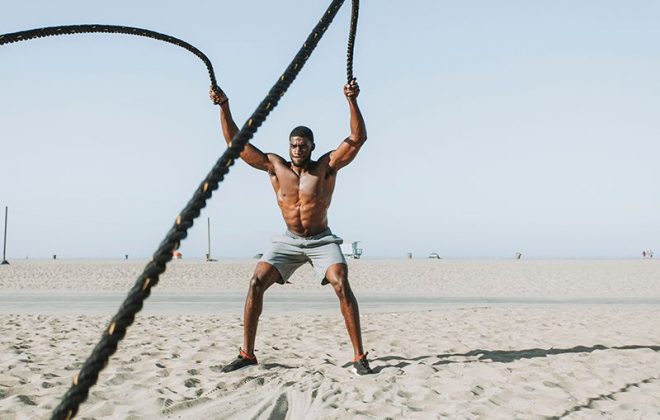
At school we are doing a “Genius Hour” project and I am doing it on “How to become a better athlete” amd we are trying to find mentors that can reach out and help if we have any questions. If there is anyone out there that can help, please email me back. Thank you!